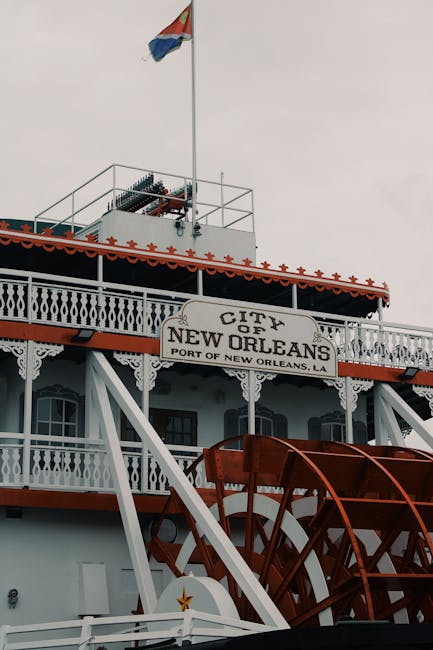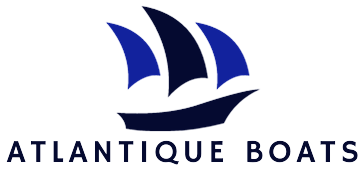When it comes to the marvels of modern engineering, propellers on a cruise ship stand out as a testament to human ingenuity. These powerful mechanisms, hidden beneath the water’s surface, play a crucial role in propelling these massive vessels across the vast expanse of the ocean. As the ship glides effortlessly through the waves, it is the propellers that work tirelessly to ensure a smooth and efficient journey for passengers on board.
But what exactly makes these propellers so fascinating? Beyond their sheer size and strength, propellers on a cruise ship are a remarkable blend of art and science. Designed to maximize efficiency and minimize energy consumption, these intricate machines showcase the mastery of naval architects and engineers. From their precise shape and angle to the materials used in their construction, every aspect of a cruise ship propeller is carefully calibrated to optimize performance. Join me as we dive deeper into the world of propellers on a cruise ship, uncovering the secrets behind their design and the pivotal role they play in the smooth sailing of these majestic vessels.
Propellers on a cruise ship: The propellers on a cruise ship are responsible for propelling the ship through the water. They are large, rotating blades that generate forward thrust by pushing water in the opposite direction. The number and size of propellers vary depending on the size and design of the ship. Cruise ships typically have multiple propellers, which are powered by powerful engines. These propellers play a crucial role in the ship’s propulsion system, ensuring smooth and efficient navigation.

Propellers on a Cruise Ship
In this article, we will provide a step-by-step guide on understanding the propellers used in cruise ships. Cruise ship propellers play a crucial role in the ship’s propulsion system, allowing it to navigate the vast oceans efficiently and safely.
Step 1: Understanding the Function of Propellers
Cruise ship propellers are an essential component of the ship’s propulsion system. They are responsible for generating the necessary thrust to move the ship through the water. The propellers work by rotating rapidly, creating a pressure difference that propels the ship forward. Understanding the function of propellers is crucial in comprehending how they contribute to the overall performance of a cruise ship.
Additionally, propellers are designed to optimize fuel efficiency and minimize noise and vibration. They are carefully engineered to ensure smooth operation while maximizing the ship’s speed and maneuverability.
Step 2: Types of Propellers Used in Cruise Ships
There are various types of propellers used in cruise ships, each with its own advantages and characteristics. One common type is the fixed-pitch propeller, which has a constant blade angle and cannot be adjusted during operation. These propellers are reliable and cost-effective but offer limited efficiency and maneuverability.
Another type is the controllable-pitch propeller, which allows the ship’s crew to adjust the blade angle for optimal performance. These propellers offer better fuel efficiency and maneuverability, making them a popular choice for modern cruise ships. They can be adjusted to adapt to different operating conditions, such as varying water depths or sea currents.
Step 3: Maintenance and Inspection of Propellers
Proper maintenance and regular inspection of cruise ship propellers are essential to ensure their optimal performance and longevity. Routine inspections include checking for any signs of damage, such as cracks or erosion, and ensuring that the propellers are clean and free from debris.
Additionally, propellers may require periodic polishing or repair to maintain their efficiency. This involves removing any marine buildup or corrosion that may accumulate on the propeller blades over time. It is crucial to follow the manufacturer’s guidelines and recommendations for maintenance procedures to ensure the propellers operate at their best.
Step 4: Safety Considerations
When working with cruise ship propellers, safety should always be a top priority. It is essential to follow strict safety protocols and guidelines to prevent accidents and injuries. Only trained and qualified personnel should be allowed to carry out maintenance or repair tasks on the propellers.
Furthermore, proper protective equipment and safety measures, such as lockout/tagout procedures, should be implemented to ensure the propellers are safely handled. Regular safety training and awareness programs should also be conducted to educate crew members about the potential risks associated with propeller maintenance.
Frequently Asked Questions
Here are some commonly asked questions about propellers on a cruise ship:
Question 1: How do propellers work on a cruise ship?
Propellers on a cruise ship are responsible for generating the thrust needed to move the ship through the water. They consist of large rotating blades that push water backward, propelling the ship forward. The propellers are typically located at the stern (rear) of the ship and are driven by powerful engines. The number and size of propellers can vary depending on the size and design of the cruise ship.
The propellers are designed to optimize efficiency and minimize noise and vibrations. They are carefully engineered to provide the necessary power to propel the ship while also ensuring smooth and comfortable sailing for passengers on board.
Question 2: What materials are propellers on a cruise ship made of?
Propellers on a cruise ship are commonly made of bronze, stainless steel, or a combination of both. These materials are chosen for their durability, corrosion resistance, and ability to withstand the harsh conditions of saltwater environments.
The propellers undergo rigorous testing and quality control measures to ensure they meet the highest standards. They are designed to withstand the forces generated by the engines and the resistance of the water, enabling them to operate efficiently and reliably throughout the lifespan of the cruise ship.
Question 3: How are propellers maintained on a cruise ship?
Propellers on a cruise ship require regular maintenance to ensure optimal performance and prevent any potential issues. Routine inspections are conducted to check for any damage, corrosion, or signs of wear. If any issues are identified, the propellers may need to be repaired or replaced.
During dry dock periods, the cruise ship is taken out of the water, allowing for more extensive maintenance and repairs to be carried out. This can include cleaning, polishing, balancing, and even replacing the propellers if necessary. Proper maintenance of the propellers is essential for the safe and efficient operation of the cruise ship.
Question 4: Do propellers on a cruise ship pose any environmental concerns?
Propellers on a cruise ship can have some environmental impact, particularly in terms of underwater noise and potential disturbance to marine life. However, cruise ship operators are taking steps to mitigate these concerns.
Advancements in propeller design and technology are aimed at reducing noise and vibrations. Additionally, some cruise ships are equipped with specialized systems to minimize the impact on marine life, such as bubble curtains or propeller modifications to decrease cavitation noise. Environmental regulations and guidelines also help ensure that cruise ships operate in an environmentally responsible manner.
Question 5: Can propellers on a cruise ship be a safety hazard for marine life?
Propellers on a cruise ship can be a potential safety hazard for marine life, especially if they come into direct contact with the rotating blades. However, cruise ship operators implement various measures to minimize the risks.
Many modern cruise ships are equipped with advanced detection systems, such as sonar and thermal imaging, which can help identify and avoid marine life in the vicinity of the ship. Additionally, cruise ships adhere to strict speed limits and guidelines in sensitive areas to reduce the chances of collisions with marine life. These measures aim to protect marine life and ensure the safety of both the animals and the cruise ship.
In conclusion, propellers on a cruise ship play a crucial role in the vessel’s overall performance and efficiency. These powerful mechanical devices propel the ship through the water, ensuring a smooth and enjoyable journey for passengers on board. The design and engineering of these propellers have evolved over time to maximize fuel efficiency and minimize environmental impact, reflecting the industry’s commitment to sustainability. With ongoing advancements in technology, propellers continue to be a vital component of modern cruise ships, enabling them to navigate through various weather conditions and reach distant destinations with ease.
Moreover, propellers on a cruise ship also offer a glimpse into the fascinating world of marine engineering. The intricate design and construction of these propellers showcase the remarkable ingenuity of human innovation. From the choice of materials to the shape and size, every aspect is carefully considered to optimize performance and reduce noise and vibration. The propellers are a testament to the dedication and expertise of the engineers who strive to create the most efficient and reliable propulsion systems. As the cruise industry continues to grow and evolve, propellers will undoubtedly play a significant role in shaping the future of ocean travel, ensuring unforgettable experiences for passengers while preserving the beauty of our oceans.

















